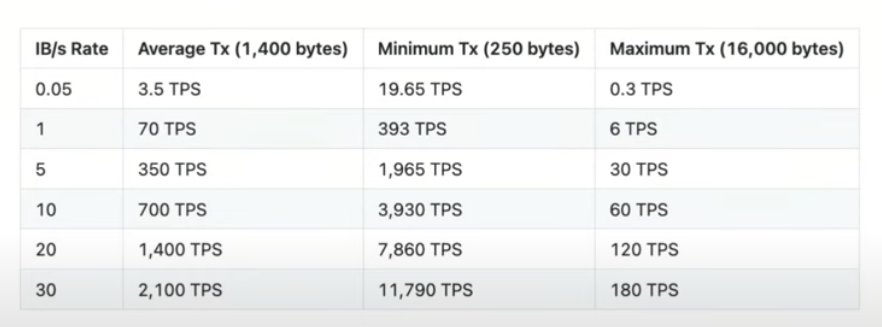Cardano founder Charles Hoskinson used his 1 Might 2025 livestream to unveil the primary quantitative efficiency figures for Ouroboros Leios, the protocol improve that—if it performs in manufacturing because the prototype already does in simulation—guarantees what he referred to as “an infinitely scalable protocol, a one-minus-delta protocol.”
Ouroboros Leios: Cardano’s Boldest Improve But
Talking from Colorado, Hoskinson described Leios as probably the most formidable iteration within the Ouroboros analysis line: a telescoping design that “extends Prowse” but can “collapse again right down to the present protocol” ought to any unexpected fault happen. Not like stand-alone Byzantine-Fault-Tolerant (BFT) engines, Leios is engineered to stack on Cardano’s present proof-of-stake ledger with out abandoning the unique 50% Byzantine resistance or the community’s 24/7 liveness ensures.
Hoskinson shared a single slide from the prototyping staff that captured the group’s consideration. The metric in focus was the input-block (IB) charge, a brand new adjustable parameter that multiplies throughput by inserting many “enter blocks” in parallel earlier than every rating block is elected.
“With simply that one enter block, you may see that most is about 6 TPS,” he mentioned whereas pointing to the graphic. “You’ve 5 enter blocks, 10 enter blocks, 20, 30—11,000 TPS in your minimal [250 Bytes], most 180 [TPS] at 16,000-kilobyte transactions, that are large.”

As a result of IB depend is a parameter, community governors will have the ability to elevate or decrease it every “tick” interval, then dedicate a subsequent “tock” interval to software program and community optimizations earlier than turning the dial once more. In Hoskinson’s phrases, “year-by-year Cardano will get naturally sooner and it doesn’t require a brand-new design or protocol for it.”
Leios is probably the most invasive change to the Haskell node because the 2020 shift from Ouroboros-BFT to Shelley consensus. The improve touches just about each subsystem: ledger logic, block construction, community stack, consensus guidelines and cryptography. A “follow-the-sun” growth schedule—a number of groups handing code off throughout time zones—will probably be adopted to compress time-to-market regardless of greater price and developer fatigue.
When Will Leios Ship?
Hoskinson cautioned that the rewrite is non-trivial: “It sometimes takes about 9 months to 12 months of implementation effort from a SIP to carry this into the protocol.” The formal specification, simulations and Cardano Enchancment Proposal (SIP) are anticipated to be completed “the second half of this 12 months.” As soon as these artefacts exist, Enter Output World (IOG) will concern a request for proposals to outdoors companies to co-implement the code in Haskell—and doubtlessly in Rust and Go if various shoppers mature in time.
Leios arrives alongside a separate roadmap of Layer-2 applied sciences—Hydra, Mithril, Midgard optimistic roll-ups and the recursive-SNARK initiative—every designed to compound throughput with out compromising decentralisation. Hoskinson emphasised that the UTXO mannequin makes Cardano uniquely able to embedding zero-knowledge proofs: “Each output could be a proof versus a transaction.”
The technique is to let Leios provide base-layer headroom whereas Layer-2s add specialised scalability paths, collectively positioning the community to soak up “the big transaction quantity that Bitcoin DeFi, XRP DeFi, and us turning into an AVS system” might generate.
Hoskinson closed by reiterating Cardano’s research-driven ethos: “No person within the cryptocurrency trade writes a SIP, has dense simulations and prototyping, and a proper specification because the definition of an RFP. No person does that.” Leios, he mentioned, is the “crowning achievement of ten-plus years of cautious thought, analysis and engineering… the capstone of the Ouroboros agenda.”
If the supply timetable holds, Cardano stakeholders may very well be voting on the Leios SIP in early 2026, bringing reside throughput of at the least 11,000 transactions per second—with out abandoning the platform’s signature safety mannequin—earlier than the top of subsequent 12 months.
At press time, ADA traded at $0.71.

Featured picture created with DALL.E, chart from TradingView.com

Editorial Course of for bitcoinist is centered on delivering completely researched, correct, and unbiased content material. We uphold strict sourcing requirements, and every web page undergoes diligent overview by our staff of high know-how consultants and seasoned editors. This course of ensures the integrity, relevance, and worth of our content material for our readers.


